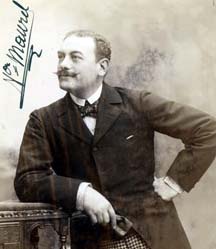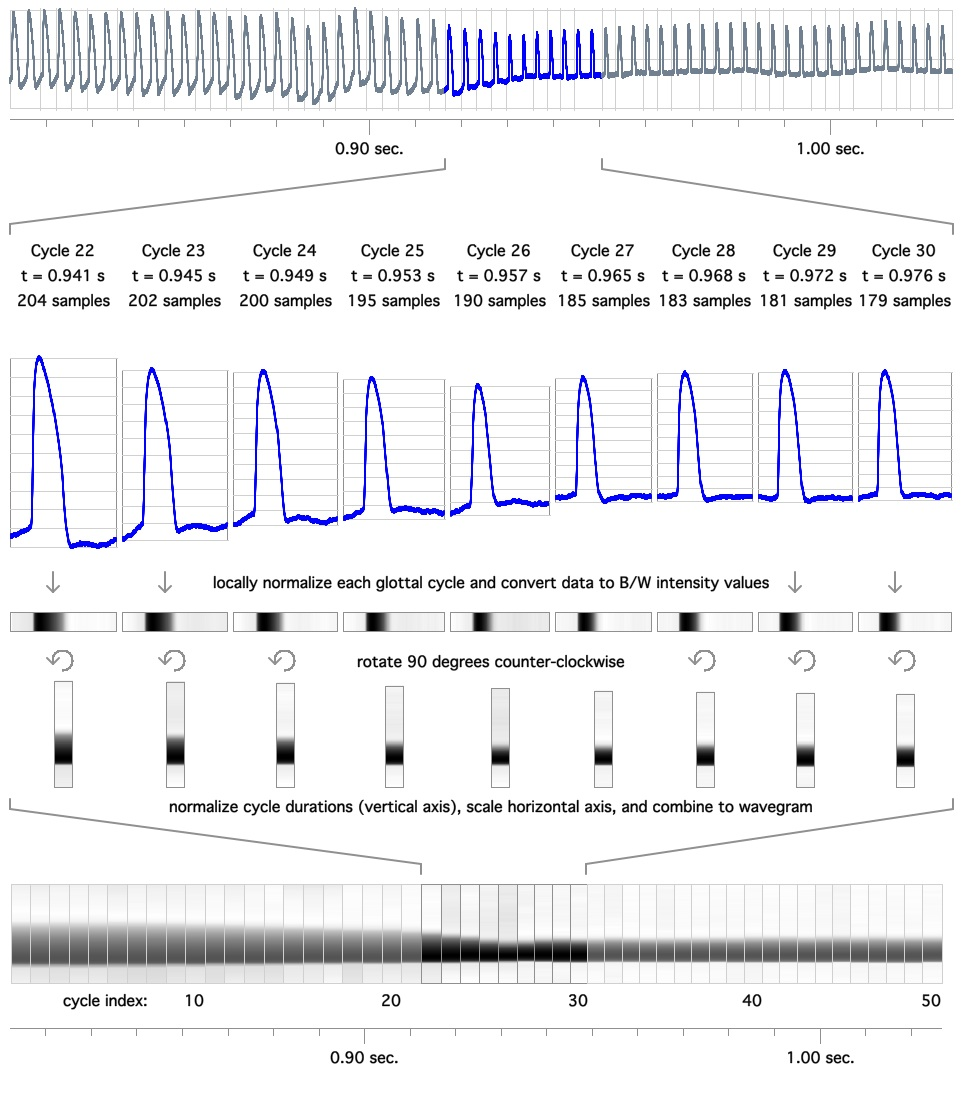|
Chiaroscuro (music)
' (Italian for "light-dark") is part of bel canto, an originally Italian classical singing technique in which a brilliant sound referred to as '' squillo'' is coupled with a dark timbre called '. The overall sound is often perceived as having great depth or warmth. Chiaroscuro is commonly used in opera. Within operatic singing, especially in Italian, the vowel "Ah" provides an example of where chiaroscuro can be used: the vowel must have a bright Italian sound, as well as depth and space in the tone, which is achieved through the use of breath and the body. History Origins The initial creation of chiaroscuro is not clear because the term was only used by 18th-century Italian composers. Some have argued that the concept of chiaroscuro was initially created in the 14th or 15th century. Early composers and theorists, such as Lodovico Zacconi in 1592, described their preferred tonal sound in detail that mirrored the Italian chiaroscuro style. Their discussions of a bright ringing ... [...More Info...] [...Related Items...] OR: [Wikipedia] [Google] [Baidu] |
Bel Canto
, )—with several similar constructions (, , , pronounced in English as )—is a term with several meanings that relate to Italian singing, and whose definitions have often been misunderstood. ''Bel canto'' was not only seen as a vocal technique, but also as a source of national pride for Italians, specifically in how the musical qualities aligned with their identity. However, this pride was often complicated by political circumstances. The phrase was not associated with a "school" of singing until the middle of the 19th century, when writers in the early 1860s used it nostalgically to describe a manner of singing that had begun to wane around 1830. Nonetheless, "neither musical nor general dictionaries saw fit to attempt definition f ''bel canto''until after 1900". The term remains vague and ambiguous in the 21st century and is often used to evoke a lost singing tradition. History of the term and its various definitions As generally understood today, the term ''bel canto'' ... [...More Info...] [...Related Items...] OR: [Wikipedia] [Google] [Baidu] |
Larynx
The larynx (), commonly called the voice box, is an organ (anatomy), organ in the top of the neck involved in breathing, producing sound and protecting the trachea against food aspiration. The opening of larynx into pharynx known as the laryngeal inlet is about 4–5 centimeters in diameter. The larynx houses the vocal cords, and manipulates pitch (music), pitch and sound pressure, volume, which is essential for phonation. It is situated just below where the tract of the pharynx splits into the trachea and the esophagus. The word 'larynx' (: larynges) comes from the Ancient Greek word ''lárunx'' ʻlarynx, gullet, throatʼ. Structure The triangle-shaped larynx consists largely of cartilages that are attached to one another, and to surrounding structures, by muscles or by fibrous and elastic tissue components. The larynx is lined by a respiratory epithelium, ciliated columnar epithelium except for the vocal folds. The laryngeal cavity, cavity of the larynx extends from its tria ... [...More Info...] [...Related Items...] OR: [Wikipedia] [Google] [Baidu] |
La Rondine
''La rondine'' (''The Swallow'') is an opera in three acts by Giacomo Puccini to an Italian libretto by Giuseppe Adami, based on a libretto by Alfred Maria Willner and . It was first performed at the Grand Théâtre de Monte Carlo (or the Théâtre du Casino) in Monte Carlo on 27 March 1917. Composition history In autumn 1913, the directors of Vienna's Carltheater commissioned Puccini to compose a Viennese operetta. After confirming that it could take the form of a comic opera with no spoken dialogue in the style of ''Der Rosenkavalier'', "only more entertaining and more organic,"Gavin Plumly, "Puccini's Bittersweet Operetta", San Francisco Opera program, Nov/Dec 2007, pp. 30/31 he agreed. The work proceeded for two years, sometimes intensely, sometimes with great difficulty, and in spring 1916 the opera was finished. The originally intended Viennese première was impeded by the outbreak of World War I and the entrance of Italy in the Alliance against Austria-Hungary, hence the ... [...More Info...] [...Related Items...] OR: [Wikipedia] [Google] [Baidu] |
Leontyne Price
Leontyne Price ( born Mary Violet Leontine Price February 10, 1927) is an American spinto soprano who was the first African-American soprano to receive international acclaim. From 1961 she began a long association with the Metropolitan Opera. She regularly appeared at the world's major opera houses, including the Royal Opera House, San Francisco Opera, Lyric Opera of Chicago, and La Scala. She was particularly renowned for her performances of the title role in Giuseppe Verdi's ''Aida''. Born in Laurel, Mississippi, Price studied music at Wilberforce University in Ohio where she began her undergraduate education in the fall 1944 semester as a student in the College of Education and Industrial Arts. Internal conflicts within Wilberforce's administration led the College of Education and Industrial Arts to break from Wilberforce University in June 1947 just before Price began her senior year at the school. It became a separate college known as the State College of Education and Ind ... [...More Info...] [...Related Items...] OR: [Wikipedia] [Google] [Baidu] |
Pagliacci
''Pagliacci'' (; literal translation, 'Clowns') is an Italian opera in a prologue and two acts, with music and libretto by Ruggero Leoncavallo. The opera tells the tale of Canio, actor and leader of a commedia dell'arte theatrical company, who murders his wife Nedda and her lover Silvio on stage during a performance. ''Pagliacci'' premiered at the Teatro Dal Verme in Milan on 21 May 1892, conducted by Arturo Toscanini, with Adelina Stehle as Nedda, Fiorello Giraud as Canio, Victor Maurel as Tonio, and Mario Ancona as Silvio. Soon after its Italian premiere, the opera played in London (with Nellie Melba as Nedda) and in New York (on 15 June 1893, with Agostino Montegriffo as Canio). ''Pagliacci'' is the best-known of Leoncavallo's ten operas and remains a staple of the repertoire. ''Pagliacci'' is often staged with ''Cavalleria rusticana'' by Pietro Mascagni, a double bill known colloquially as "Cav/Pag". Origin and disputes Leoncavallo was a little-known composer when Pietro Masc ... [...More Info...] [...Related Items...] OR: [Wikipedia] [Google] [Baidu] |
Roméo Et Juliette
''Roméo et Juliette'' (, ''Romeo and Juliet'') is an opera in five acts by Charles Gounod to a French libretto by Jules Barbier and Michel Carré, based on ''Romeo and Juliet'' by William Shakespeare. It was first performed at the Théâtre Lyrique (Théâtre-Lyrique Impérial du Châtelet), Paris on 27 April 1867. This opera is notable for the series of four duets for the main characters and the waltz song ''"Je veux vivre"'' for the soprano. Performance history Gounod's opera ''Faust'' had become popular at the Théâtre Lyrique since its premiere in 1859 (it was performed over 300 times between 1859 and 1868) and this led to a further commission from the director Léon Carvalho. Walsh, T. J. ''Second Empire Opera – The Théâtre-Lyrique Paris 1851–1870.'' John Calder, London, 1981. Behind the scenes there were difficulties in casting the lead tenor, and Gounod was said to have composed the last act twice, but after the public general rehearsal and first night it was hail ... [...More Info...] [...Related Items...] OR: [Wikipedia] [Google] [Baidu] |
Franco Corelli
Franco Corelli (8 April 1921 – 29 October 2003) was an Italian tenor who had a major international opera career between 1951 and 1976. Associated in particular with the spinto and dramatic tenor roles of the Italian repertory, he was celebrated universally for his powerhouse voice, electrifying top notes, clear timbre, passionate singing and remarkable performances. Dubbed the "prince of tenors", audiences were enchanted by his handsome features and charismatic stage presence. He had a long and fruitful partnership with the Metropolitan Opera in New York City between 1961 and 1975. He also appeared on the stages of most of the major opera houses in Europe and with opera companies throughout North America. Biography Early life and education: 1921–1950 Corelli was born Dario Franco Corelli in Ancona into a family some say had little or no musical background. While his parents were not particularly musical, his paternal grandfather Augusto had actually quit working at 35 ... [...More Info...] [...Related Items...] OR: [Wikipedia] [Google] [Baidu] |
Cricothyroid Muscle
The cricothyroid muscle is the only tensor muscle of the larynx aiding with phonation. It is innervated by the superior laryngeal nerve. Its action tilts the thyroid forward to help tense the vocal cords, thus increasing the pitch of the voice. Structure The cricothyroid muscle is a fan-shaped muscle situated at the outer surface of the larynx. Origin The cricothyroid muscle originates from the anterolateral aspect of the cricoid cartilage. Insertion The cricothyroid muscle splits into two groups or parts. The oblique part travels posterolaterally and inserts onto the inferior cornu of the thyroid cartilage. The straight part travels posterosuperiorly and inserts onto the inferior margin of the lamina of the thyroid cartilage. Innervation The cricothyroid muscle is innervated by the external branch of the superior laryngeal nerve (a branch of the vagus nerve). It is the only muscle innervated by this nerve. Function The cricothyroid muscle produces tension and ... [...More Info...] [...Related Items...] OR: [Wikipedia] [Google] [Baidu] |
Thyroarytenoid Muscle
The thyroarytenoid muscle is a broad, thin muscle that forms the body of the vocal fold and that supports the wall of the ventricle and its appendix. It functions to shorten the vocal folds. Structure It arises in front from the lower half of the angle of the thyroid cartilage, and from the middle cricothyroid ligament. Its fibers pass backward and laterally, to be inserted into the base and anterior surface of the arytenoid cartilage. Parts The lower and deeper fibers of the muscle can be differentiated as a triangular band which is inserted into the vocal process of the arytenoid cartilage, and into the adjacent portion of its anterior surface; it is termed the ''Vocalis'', and lies parallel with the vocal ligament, to which it is adherent.Frank H. Netter, MD "Atlas of Human anatomy", 7th Edition, 2019, Plate 91, superior view The vocal muscle is the upper portion of the thyroarytenoid muscle which is primarily involved in producing speech. A considerable number of the fi ... [...More Info...] [...Related Items...] OR: [Wikipedia] [Google] [Baidu] |
Chest Voice
Chest voice is a term used within vocal music. The use of this term varies widely within vocal pedagogical circles. There is no consistent opinion among vocal music professionals regarding the term. Chest voice can be used in relation to: * A particular part of the vocal range or type of vocal register * A vocal resonance area * A specific vocal timbre History The first recorded mention of the term chest voice was around the 13th century, when it was distinguished from the throat and the head voice ( pectoris, guttoris, capitis—at this time it is likely head voice referred to the falsetto register) by the writers Johannes de Garlandia and Jerome of Moravia.''The New Grove Dictionary of Music & Musicians''. Edited by Stanley Sadie, ''Volume 6. Edmund to Fryklund''. , Copyright Macmillan 1980. The term was later redefined during the bel canto period when it was identified as the lowest of three vocal registers: the chest, passaggio and head registers. This approach is still t ... [...More Info...] [...Related Items...] OR: [Wikipedia] [Google] [Baidu] |



